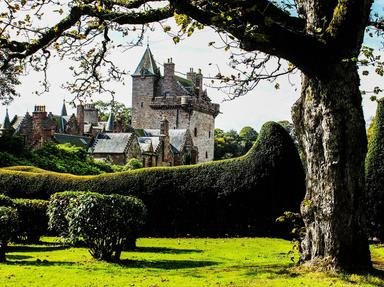Quiz Answer Key and Fun Facts
1. The famous Scottish 'kilt' has its origin in the 16th century when Highlanders began to wear 'a kind of blanket' in combination with a 'belt' in such a way that the lower half formed a 'kilt'. The upper half was attached above the shoulder with a brooch. What is the name used to describe this first style of 'Highland dress' from which the wearing of the kilt was to develop at a later stage?
2. Before the 16th century the customary Highland dress of the average Highlander did not differ from what the Irish wore: a saffron-coloured shirt.
3. The traditional arms of a Highlander were: a pistol, a broadsword, a long Spanish musket and a kind of dagger. What was the name of such a dagger?
4. What is the name of the Highland style 'pouch' worn in front of the kilt?
5. The dressing up in a tartan blanket was originally the strict prerogative of Highland Chieftains only.
6. Though there are stories that the 'kilt', as a separate item of Highland dress, was actually invented by an Englishman, Thomas Rawlinson, manager of an ironworks at Glengarry, most historians now accept that it is of true Scottish origin and was 'the poor Highlander's substitute' for full Highland Dress. Under what name was this single tartan 'little kilt' - without shoulder part - originally known?
7. After which of these battles was the wearing of the 'little kilt' officially forbidden by the English?
8. The reason why the 'kilt' was seen as a hostile symbol was that at the times of the Act of Union between England and Scotland, it had been used by Scottish nationalists as an anti-'Sassenach' symbol. When had that Act of Union been promulgated?
9. Who was the first British Monarch after the Stuarts to 'make peace with the Highlanders again' and to appear in kilt and plaid during a visit to Scotland?
10. Which of these was the first Highland Regiment to wear tartan?
Source: Author
flem-ish
This quiz was reviewed by FunTrivia editor
bloomsby before going online.
Any errors found in FunTrivia content are routinely corrected through our feedback system.

